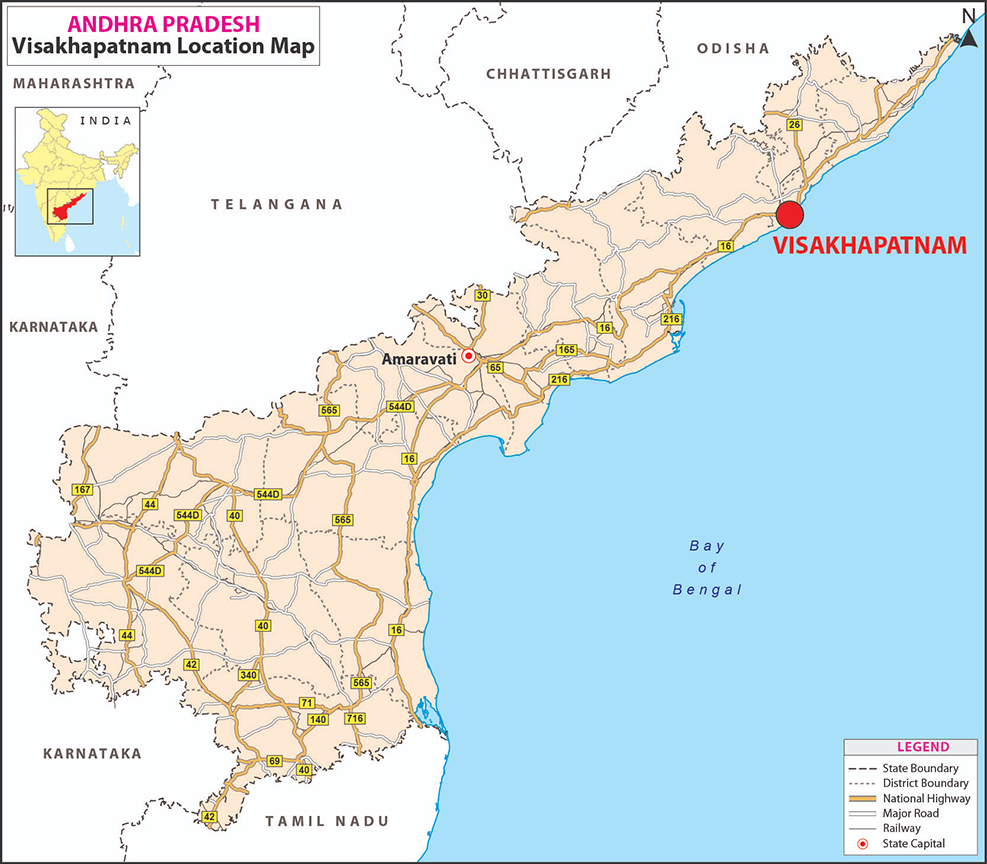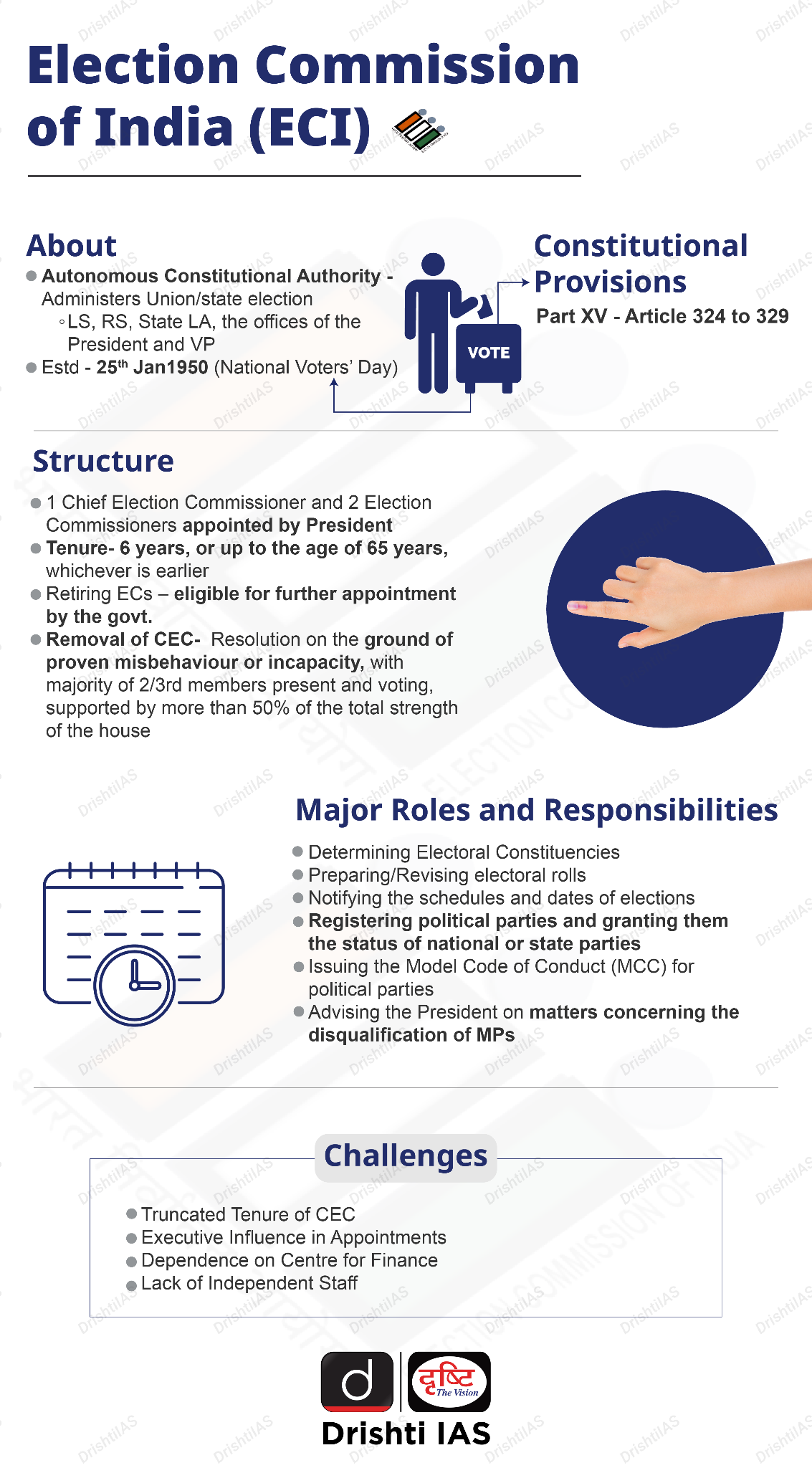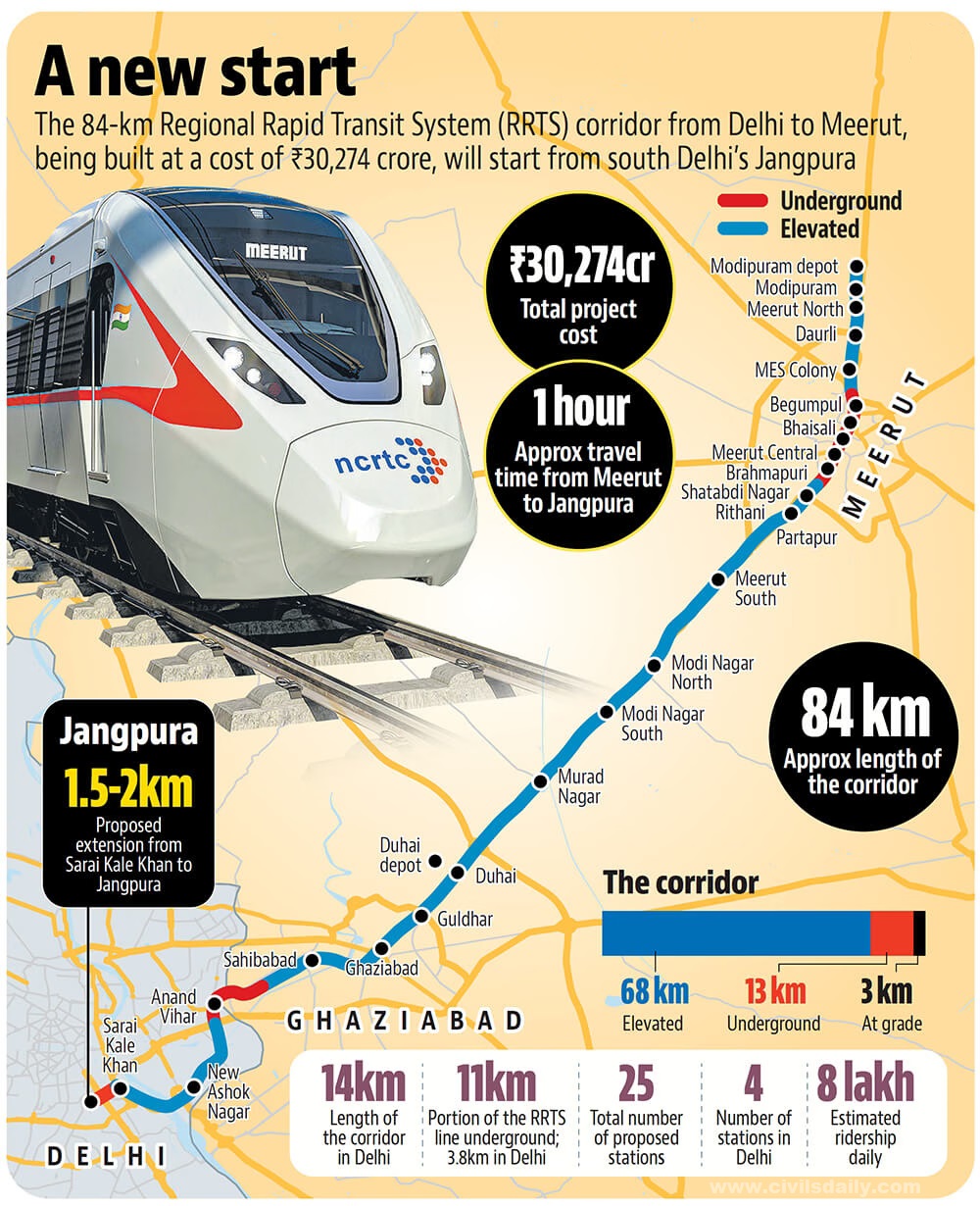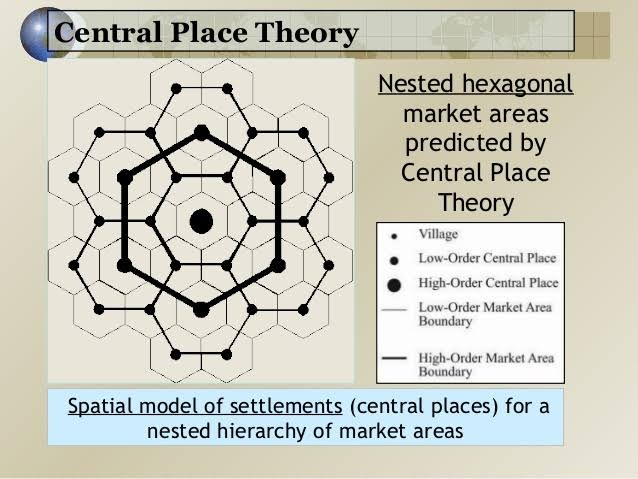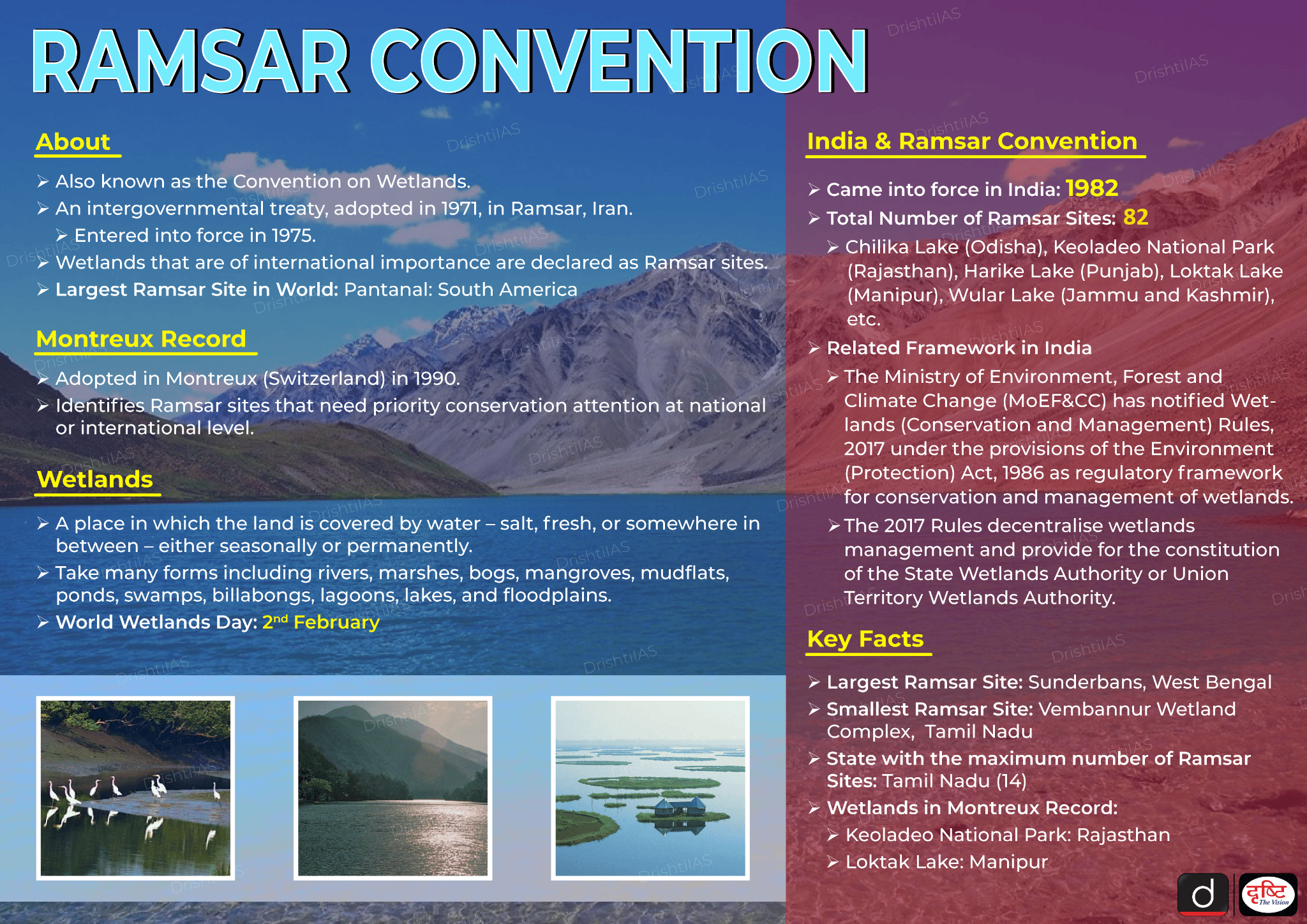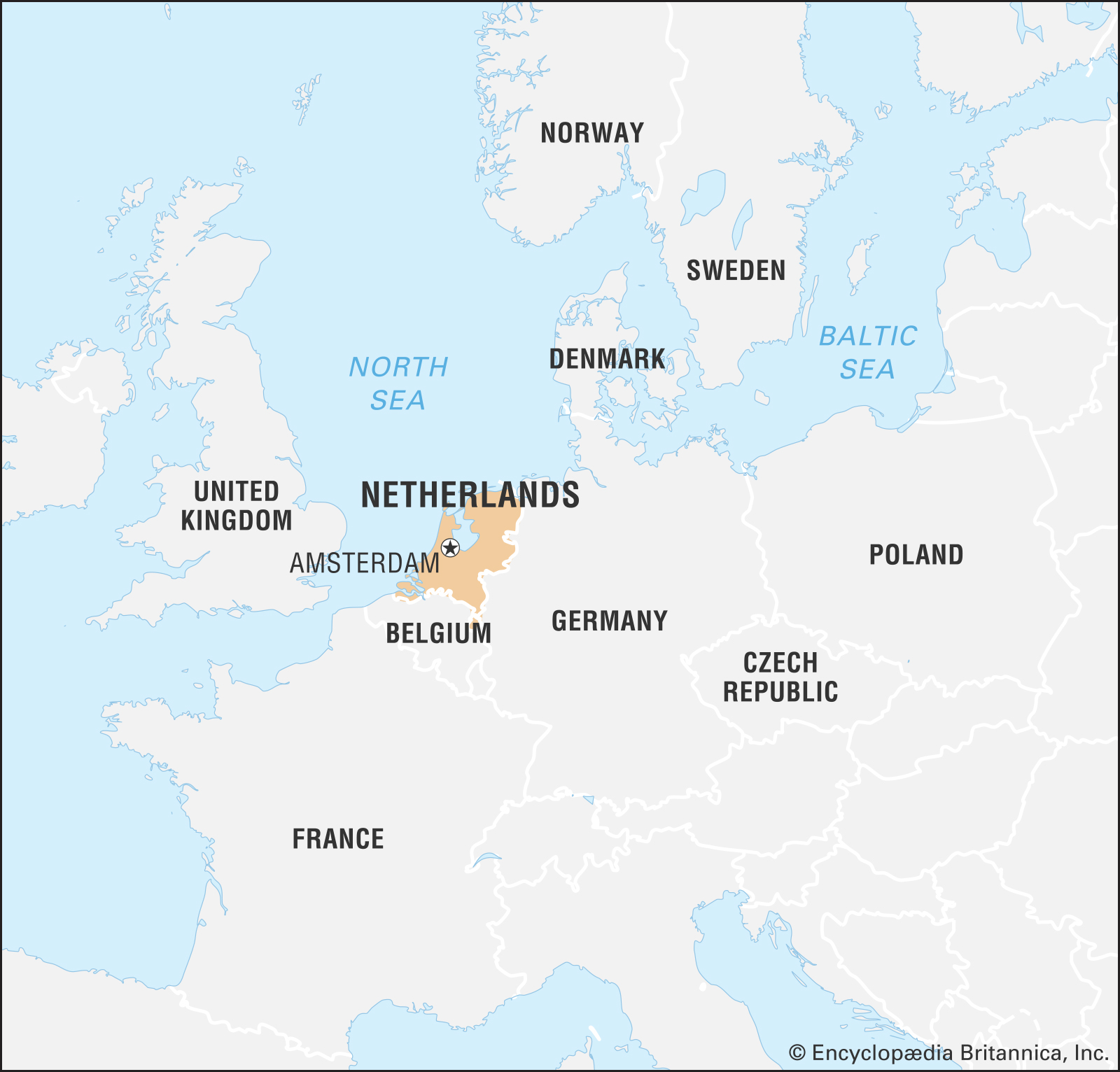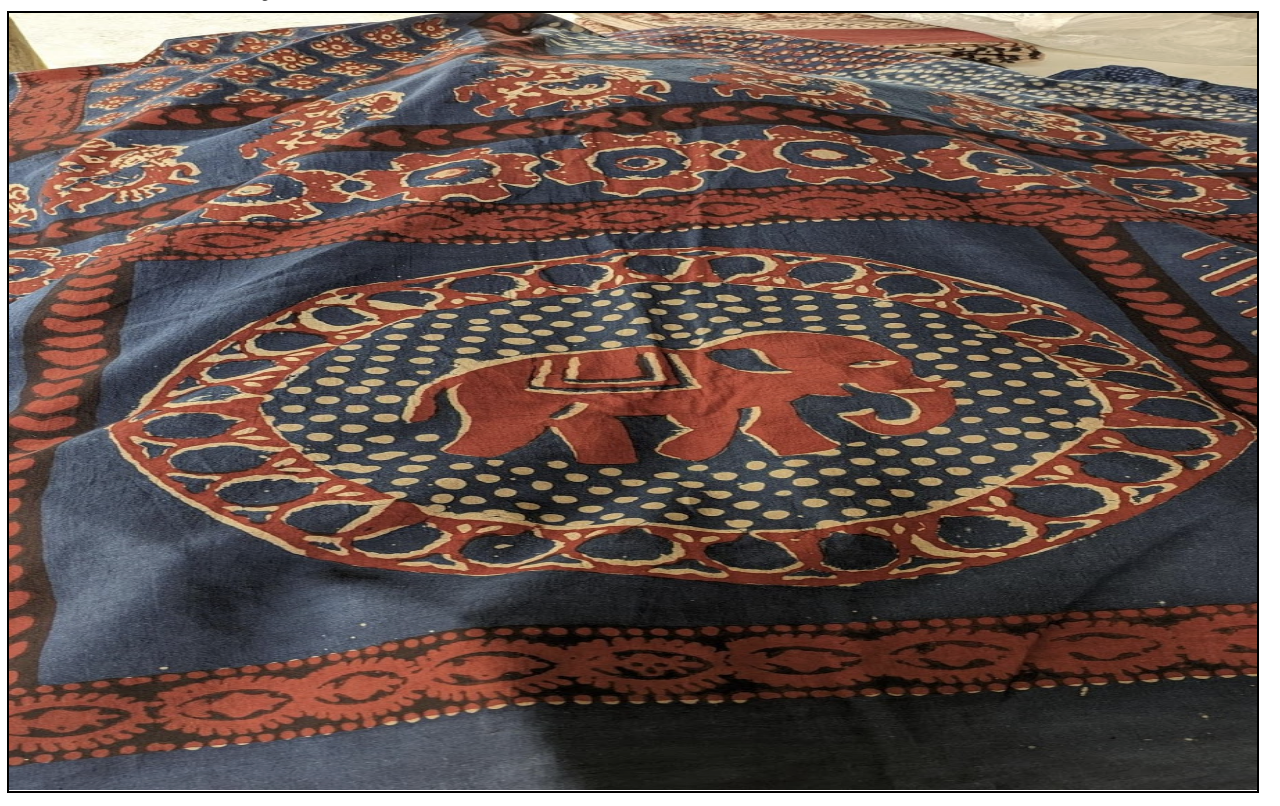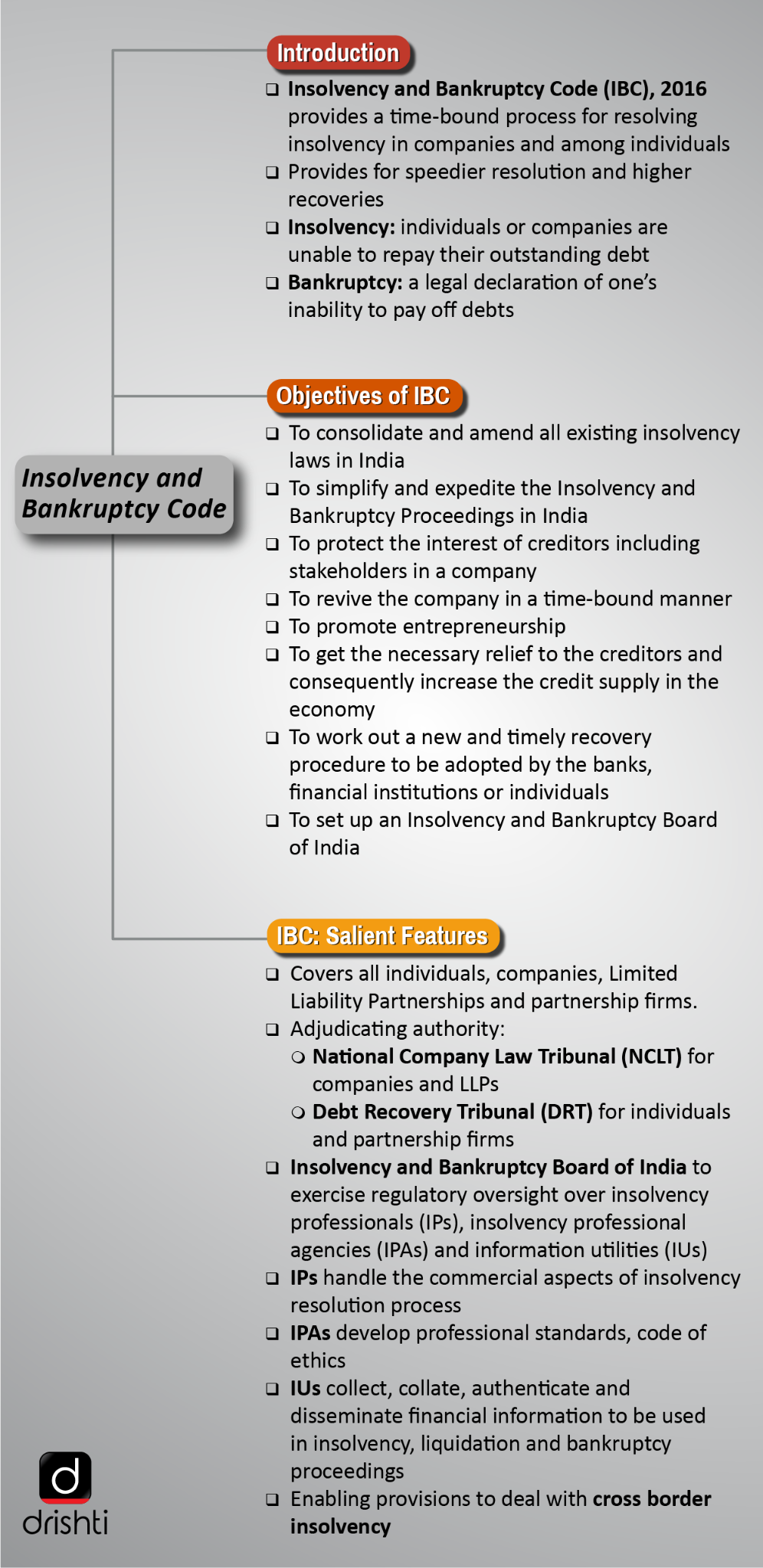Governance
Creation of Andhra Pradesh and Special Category Status
For Prelims: Dar Commission, JVP Committee, Fazal Ali Commission, States Reorganisation Act (1956), States Reorganisation Act, 1956, Andhra Pradesh Reorganisation Act, 2014, Special Category Status (SCS), 14th Finance Commission, Article 2, Article 3.
For Mains: Key recommendations of the various linguistic commissions and Its implication on unity and integrity of nation.
Why in News?
Recently, Andhra Pradesh marked the 10th anniversary of its bifurcation into two states, Andhra Pradesh and Telangana.
- This significant political shift offers a compelling opportunity to explore its wide-ranging implications on the political, economic, and historical landscape of the Telugu people.
How Andhra Pradesh has been Divided on Linguistic Basis?
- Background:
- At the Nagpur session of the Indian National Congress in December 1920, it was decided to reorganize the Provincial Congress Committees on a linguistic basis.
- This move was aimed at promoting the interests of various linguistic groups. This leads to demand for linguistic state.
- The roots of the agitation can be traced back to the linguistic reorganization movements that gained momentum in post-independence India.
- The demand for a separate state for Telugu-speaking individuals was driven by a desire to preserve and promote their linguistic and cultural identity.
- At the Nagpur session of the Indian National Congress in December 1920, it was decided to reorganize the Provincial Congress Committees on a linguistic basis.
- Agitation for Linguistic State:
- One of the most pivotal figures in this movement was Potti Sreeramulu, a Gandhian and social activist.
- He undertook a hunger strike on 19th October, 1952, demanding the creation of a separate state of Andhra Pradesh for Telugu speaking people.
- His martyrdom after 56 days of fasting, intensified the agitation and forced the Indian government to reconsider their stance on linguistic reorganisation.
- Commission for Linguistic Reorganisation of States: The Central Government of India established several commission from time to time to examine and give recommendations regarding the reorganization of state on linguistic basis. Few related commissions are:
- Dar Commission (1948):
- Purpose: To examine the feasibility of reorganization of states on linguistic lines.
- Outcome: The Dar Commission, headed by S.K. Dar, did not support the idea of reorganisation solely based on language. It emphasized administrative efficiency over linguistic homogeneity.
- JVP Committee (1948-1949):
- Members: Jawaharlal Nehru, Vallabhbhai Patel, and Pattabhi Sitaramayya.
- Purpose: To reassess the demands for linguistic states after the recommendations of the Dar Commission.
- Outcome: The JVP Committee also recommended against the reorganization of states purely on linguistic lines, suggesting that such reorganisation could lead to administrative difficulties and national disintegration.
- Fazal Ali Commission (States Reorganisation Commission) (1953-1955):
- Members: Fazal Ali (Chairman), K.M. Panikkar, and H.N. Kunzru.
- Purpose: To examine the entire question of the reorganisation of states on linguistic and other bases.
- Outcome: It recommended the creation of linguistic states but with certain reservations to ensure national integration and administrative convenience. Its recommendations led to the formation of several states based on linguistic lines.
- Dar Commission (1948):
- States Reorganisation Act (1956):
- It was based on the recommendations of the Fazal Ali Commission.
- The act led to the reorganization of state boundaries across India, significantly altering the political map of the country.
- The States Reorganisation Act, 1956 merged the Telugu-speaking areas of Hyderabad state with the Andhra state to create the enlarged Andhra Pradesh.
- The Formation of Andhra State:
- The death of Potti Sreeramulu led to violent protests and a significant public outcry and following the recommendations of several committees the Indian government, decided to form a separate state on linguistic basis.
- The first linguistic state of India, known as the state of Andhra, by taking out the Telugu speaking areas from the State of Madras was created.
- On 2nd June, 2014 the northwestern part of Andhra Pradesh was separated and 29th state Telangana was created through the Andhra Pradesh Reorganisation Act, 2014.
- The issue of granting Special Category Status (SCS) to Andhra Pradesh has been a significant and contentious topic since the bifurcation of the state in 2014.
What is Special Category Status (SCS)?
- About:
- SCS is a classification granted to some States by the Centre to assist development, based on geographical and socio-economic disadvantages.
- The scheme was introduced in 1969 on the recommendation of the Fifth Finance Commission.
- Factors considered for granting SCS to a State:
- Hilly and difficult terrain
- Low population density and/or sizeable share of tribal population
- Strategic location along international borders
- Economic and infrastructural backwardness
- Non-viable nature of State finances
- The 14th Finance Commission has done away with the 'special category status' for states, except for the Northeastern and three hill states.
- States with Special Status: Arunachal Pradesh, Assam, Himachal Pradesh, Jammu and Kashmir, Manipur, Meghalaya, Mizoram, Nagaland, Sikkim, Tripura, and Uttarakhand .
What are the Constitutional Provision for Formation of New State?
- Article 2:
- Parliament may by law admit into the Union, or establish, new States on such terms and conditions as it thinks fit.
- Article 3:
- Formation of new States and alteration of areas, boundaries or names of existing States:
- Form a new State by separation of territory from any State or by uniting two or more States or parts of States or by uniting any territory to a part of any State
- Increase the area of any State
- Diminish the area of any State
- Alter the boundaries of any State
- Alter the name of any State
- Formation of new States and alteration of areas, boundaries or names of existing States:
What are the Important Fact about State of Andhra Pradesh?
- Bordered: The state is bordered by Chhattisgarh to the north, Odisha to the northeast, Telangana and Karnataka to the west, Tamil Nadu to the south, and the Bay of Bengal to the east.
- Festival: Ugadi, Pedda Panduga, Pongal
- Art & Culture: Tholu Bommalata (Puppet show), Dappu (The Dance of Percussion), Veera Natyam (The Dance of the Brave), Tappeta Gullu (The Dance of the Rain God), Kolattam, Lambadi (The Dance of Nomads), Kuchipudi, Bhama Kalapam, Yakshagana, Kalamkari (Textile Art).
- Wildlife and Bird Sanctuary:
- Tribes: Chenchu, Gadabas, Sawara, Kondh, Kolam, Porja
|
Drishti Mains Question: Discuss the historical context and significance of the linguistic reorganisation of states in India, particularly focusing on the events leading up to the formation of Andhra Pradesh. |
UPSC Civil Services Examination Previous Year Question (PYQ)
Q. The power of the Supreme Court of India to decide disputes between the Centre and the States falls under its (2014)
(a) advisory jurisdiction
(b) appellate jurisdiction
(c) original jurisdiction
(d) writ jurisdiction
Ans: (c)

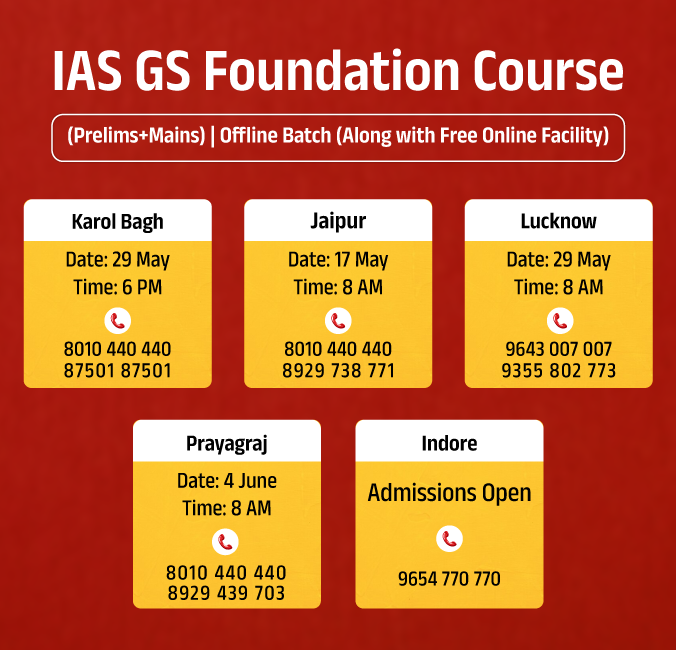
Indian Economy
Look-Out Circulars to Wilful Defaulters
For Prelims: Willful Defaulter, NPA, RBI, Public sector banks (PSBs).
For Mains: Challenges, Prevention of Wilful Defaulters, Provisions to NPA resolution, Banking Sector, Issues and Provisions related to Debt Recovery.
Why in News?
Since 2018, six Public Sector Banks (PSBs) have issued 1,071 Look-out Circulars (LOCs) in order to prevent wilful defaulters from absconding to other countries.
- Wilful defaulters are borrowers who deliberately or intentionally fail to repay their debts, even though they have the capacity to do so.
What is a Look-Out Circular (LOC)?
- About:
- It is a notice to stop any individual wanted by the police, investigating agency or even a bank from leaving or entering the country through designated land, air and sea ports.
- The Bureau of Immigration, under the Ministry of Home Affairs, is responsible for preventing such individuals from entering or leaving the country if there is a notification against them.
- There are a total of 112 immigration check posts located throughout the country.
- Who Can Issue LOCs:
- A large number of agencies can issue lookout circulars;
- Central Bureau of Investigation (CBI)
- Enforcement Directorate (ED)
- Directorate of Revenue Intelligence (DRI)
- Income Tax department
- State police and intelligence agencies.
- The officer who issues a LOC should not be below the rank of a district magistrate or superintendent of police or a deputy secretary in the Union Government.
- A large number of agencies can issue lookout circulars;
- Modification & Validity:
- LOC can be modified; deleted or withdrawn only at the request of the originator.
- LOC will remain valid for a maximum of 12 months, and if there is no new request from the agency, it will not be automatically renewed.
- The Bureau of Immigration, is responsible for maintaining and taking action against individuals with LOC at Immigration Check Posts (ICPs) as directed by the originating agency.
- Power of PSBs to Issue LOCs:
- Earlier, as of 2018, banks were also authorised to issue LOCs against individuals who could potentially harm the economic interests of the country.
- However, recently the Bombay High Court ruled that PSBs cannot issue LOCs against alleged loan defaulters, deeming it a violation of fundamental rights in the absence of a statute or law.
- This ruling overturns the 2018 Government Office Memorandums, which had empowered banks to issue LOCs.
Who are Wilful Defaulters?
- The Reserve Bank of India (RBI) defines wilful defaulters as borrowers who meet one or more of the following criteria:
- Deliberate non-payment of dues despite having sufficient funds.
- Diverting loan funds for purposes other than what they were borrowed for.
- Syphoning off loan funds so they are unavailable for repayment.
- Minimum Threshold: The minimum loan amount for a borrower to be labelled a wilful defaulter is Rs 25 lakh and above.
- A large defaulter refers to a borrower with an outstanding balance of Rs 1 crore or more, whose account has been categorized as doubtful or a loss.
What are the Economic Implications of Wilful Defaulters?
- Credit Market Impact:
- Liquidity Constraints: Wilful defaulters struggle to secure new loans due to liquidity constraints. Lenders are hesitant to provide them with additional credit or financing for fresh business ventures.
- Market Reputation: Being labelled a wilful defaulter tarnishes the borrower’s reputation, affecting their ability to raise capital or secure loans in the future.
- As of December 2023, banks had categorised 17,713 accounts involving loans of Rs 353,129 crore as wilful defaults.
- Equity Markets and IPOs:
- SEBI Restrictions: The Securities and Exchange Board of India (SEBI) prohibits companies with wilful defaulters (including promoters or directors) from launching Initial Public Offers (IPOs) or issuing equity shares.
- This restriction hampers companies’ growth prospects and investor confidence.
- SEBI Restrictions: The Securities and Exchange Board of India (SEBI) prohibits companies with wilful defaulters (including promoters or directors) from launching Initial Public Offers (IPOs) or issuing equity shares.
- Insolvency and Bankruptcy Code (IBC):
- Exclusion from Resolution Plans:
- The IBC specifically prohibits wilful defaulters from submitting resolution plans for the company they defaulted on.
- Allowing wilful defaulters to participate in resolution plans could create a moral hazard, risking creditors, and discouraging responsible borrowing.
- Exclusion from Resolution Plans:
- NPA Accumulation:
- Wilful defaults contribute to the rise in Non-Performing Assets (NPAs) within the banking system which can reduce bank profits and shareholder value, affecting the overall economy.
How Wilful Defaulters can be Prevented by Banks?
- Debt Recovery Tribunals (DRTs):
- It aims to provide a fast-track mechanism for loan recovery, where banks can file cases with DRTs for swift debt recovery and asset attachment.
- It was established under the Recovery of Debts Due to Banks and Financial Institutions Act 1993.
- It aims to provide a fast-track mechanism for loan recovery, where banks can file cases with DRTs for swift debt recovery and asset attachment.
- IBC & National Company Law Tribunal (NCLT):
- For large defaults involving companies, banks can approach the National Company Law Tribunal (NCLT) under the IBC 2016.
- The IBC provides a time-bound framework for resolving insolvency and recovering dues.
- The success rate of loan recovery through the IBC has been improving. As of March 2023, the Insolvency and Bankruptcy Board of India (IBBI) reported a resolution value of Rs 8.3 lakh crore (USD1.03 trillion) achieved through IBC cases.
- Utilising the Securitization and Reconstruction of Financial Assets and Enforcement Securities Act, 2002:
- SARFAESI Act empowers banks to take possession of secured assets like land and buildings in case of defaults without lengthy court procedures. This can deter defaults by making the consequences of non-payment quicker and more tangible.
- Reserve Bank of India (RBI) Guidelines:
- RBI guidelines on KYC, Anti Money Laundering emphasise thorough due diligence before loan approvals.
- KYC requires banks to collect detailed borrower information to identify individuals or businesses with financial risks or suspicious activities.
- Anti-Money Laundering provisions will help identify potential money laundering schemes and can avoid lending to those who might be planning to deliberately default.
- RBI guidelines on KYC, Anti Money Laundering emphasise thorough due diligence before loan approvals.
- Legal Action and Blacklisting: Banks should initiate criminal proceedings against wilful defaulters when necessary.
- By blacklisting a wilful defaulter will make it very difficult to get any loans or investments in the future, which discourages him from intentionally not paying back their loans.
|
Drishti Mains Question: Q. Analyse the economic implications of wilful defaulters and suggest a comprehensive strategy to effectively deal with wilful defaulters. |
UPSC Civil Services Examination, Previous Year Question (PYQs)
Prelims
Q. With reference to the governance of public sector banking in India, consider the following statements: (2018)
- Capital infusion into public sector banks by the Government of India has steadily increased in the last decade.
- To put the public sector banks in order, the merger of associate banks with the parent State Bank of India has been affected.
Which of the statements given above is/are correct?
(a) 1 only
(b) 2 only
(c) Both 1 and 2
(d) Neither 1 nor 2
Ans: (b)


Indian Polity
NOTA Option in Indian Elections
For Prelims: Representation of the People Act, 1951, NOTA, Rule 49-O, Election Commission of India, General Financial Rules, Supreme Court of India, National and State Parties
For Mains: Consequences of ‘Getting Elected Unopposed’, Representation of the People Act, 1951, Effectiveness of NOTA
Why in News?
Recently, the Lok Sabha elections in Indore, Madhya Pradesh saw a remarkable outcome, with the NOTA (None of the Above) option receiving over 2 lakh votes, making it the highest ever for NOTA in any constituency.
What is NOTA in Indian Elections?
- About:
- It is a voting option on the ballots and Electronic Voting Machines (EVMs) that allows voters to indicate disapproval of all contesting candidates without choosing any of them.
- NOTA empowers the electors to express their negative opinions and a lack of support for the contenders.
- It gives them the right to reject while maintaining the secrecy of their decision.
- Background:
- In its 170th Report in 1999, the Law Commission explored the concept of negative voting alongside a 50%+1 voting system, but practical challenges led to no final recommendations on the matter.
- In September 2013, the Supreme Court directed the Election Commission of India (ECI) to introduce the NOTA option as a measure to safeguard the secrecy of voters' choices.
- The People’s Union for Civil Liberties (PUCL) had approached the Supreme Court in 2004, seeking measures to protect the 'right to secrecy' of voters.
- They argued that the Conduct of Elections Rules, 1961 violated the secrecy aspect as the Presiding Officer (from the ECI) maintained a record of voters who chose not to vote, along with their signatures or thumb impressions.
- The People’s Union for Civil Liberties (PUCL) had approached the Supreme Court in 2004, seeking measures to protect the 'right to secrecy' of voters.
- First Use of NOTA:
- NOTA was used for the first time in the 2013 Assembly elections in five states of Chhattisgarh, Mizoram, Rajasthan, Delhi, and Madhya Pradesh and later in the 2014 General Elections.
- It was introduced into the electoral process following the 2013 Supreme Court directive in the PUCL vs Union of India Case Case.
What Happens if NOTA Receives the Highest Votes?
- The Election Commission of India clarified that votes cast as NOTA are counted, but are considered ‘invalid votes’.
- Even if NOTA votes get the most number of votes in a constituency, the next candidate with the second-most number of votes is declared the winner. Therefore, votes made to NOTA do not change the outcome of an election.
- However, the Supreme Court is considering a petition seeking guidelines/rules for situations where NOTA receives the most votes, including the possibility of nullifying the election and holding fresh polls.
- Some states and union territories, such as Maharashtra, Haryana, and Puducherry, have already declared NOTA as a "Fictional Electoral Candidate", where fresh elections are held if NOTA gets the majority of votes.
What are the Landmark Judgments Related to NOTA?
- Lily Thomas v. Speaker, Lok Sabha Case, 1993:
- The Supreme Court held that “Voting is a formal expression of will or opinion by the person entitled to exercise the right on the subject or issue in question” and that right to vote means right to exercise the right in favour of or against the motion or resolution.
- Such a right implies the right to remain neutral as well.
- The Supreme Court held that “Voting is a formal expression of will or opinion by the person entitled to exercise the right on the subject or issue in question” and that right to vote means right to exercise the right in favour of or against the motion or resolution.
- People's Union for Civil Liberties & Anr v. Union of India & Anr Case, 2013:
- The Supreme Court mandated the provision of a "None of the Above" (NOTA) button on EVMs to allow voters to express dissatisfaction with contesting candidates while maintaining secrecy.
- The 3-judge Bench of Court held that “Whether a voter decides to cast his vote or decides not to cast his vote, in both cases, secrecy has to be maintained.”
- This decision came to enhance democracy by empowering voters and promoting fair elections.
- Shailesh Manubhai Parmar v. Election Commission of India Through the Chief Election Commissioner Case, 2018:
- The Supreme Court decided that while the NOTA option could be useful in direct elections, it wasn't suitable for Rajya Sabha (Council of States) elections.
- The court believed that using NOTA in these elections could harm democracy and encourage defection and corruption.
- Therefore, the court removed the NOTA option from Rajya Sabha elections.
Similar Initiatives to NOTA in Other Democratic Countries
- European Countries: Finland, Spain, Sweden, France, Belgium, Greece allow their voters to cast votes similar to NOTA.
- United States:
- While the U.S. does not have a formal NOTA option on ballots, some states allow write-in votes, which can serve a similar purpose.
- Voters can write “None of the Above” or other names as an expression of dissatisfaction.
- Other countries such as Colombia, Ukraine, Brazil, Bangladesh also allow voters to cast NOTA votes.
What are the Arguments in Favour and Against the NOTA Option?
- Arguments in Favour of NOTA Option:
- Enhances Voters Choice: The NOTA option empowers voters by giving them the ability to reject all the candidates on the ballot, thereby expressing their dissatisfaction with the available choices.
- Increased Political Accountability: The existence of NOTA forces political parties and candidates to field better, more capable, and more ethical representatives, as they risk losing votes if the voters are dissatisfied.
- Identifies Voter Dissatisfaction: The NOTA votes can provide valuable feedback to the Election Commission and political parties about the level of voter dissatisfaction, which can then be addressed.
- Arguments Against the NOTA Option:
- No Electoral Value: NOTA votes are merely symbolic and do not affect the outcome of the election. Even if NOTA receives a majority, the candidate with the highest vote share still wins.
- Potential for Misuse: There are concerns that the NOTA option could be misused by voters to express protest votes against the system, rather than a genuine rejection of the available candidates.
- Caste Bias: In some cases, high NOTA votes in reserved constituencies suggest a bias against candidates from certain castes, potentially undermining the purpose of NOTA.
- Undermines Representative Democracy: NOTA option undermines the principles of representative democracy, as it does not provide a clear mandate for the winning candidate.
Way Forward
- Re-elections: If NOTA receives the highest number of votes, a fresh election should be held in that constituency with a new candidate.
- For instance, in 2018, the Maharashtra State Election Commission (SEC) issued an order stating that if NOTA received the highest number of valid votes, a new election would take place.
- Barring Candidates: Candidates securing fewer votes than NOTA would be barred from contesting in the re-election.
- In a similar line, the SEC of Haryana treated NOTA as a ‘fictional candidate’ in municipal polls.
- The candidates with fewer votes than NOTA would be disqualified from participating in the re-election.
- Cost on Candidates: Political parties that lose to NOTA should bear the cost of re-election. During re-elections, the NOTA button may be disabled to prevent a series of repeated elections.
- Awareness: While NOTA provides a voice of dissent, efforts to raise voter awareness are crucial to prevent its misuse.
Conclusion
The NOTA option in Indian elections has raised important questions about voter choice, the accountability of political parties, and the integrity of the electoral process. It provides voters a way to go to the polls and withhold their approval from any candidate without boycotting the election entirely. It aims to make votes of protest formally countable. It signals the degree of popular dissatisfaction with the field of candidates to political parties.
|
Drishti Mains Question: Discuss the effectiveness and challenges of the NOTA (None of the Above) option in Indian elections. Analyse its impact on the electoral process and suggest measures to strengthen this institutional mechanism. |
UPSC Civil Services Examination, Previous Year Questions (PYQs)
Prelims
Q. Consider the following statements: (2017)
- The Election Commission of India is a five-member body.
- The Union Ministry of Home Affairs decides the election schedule for the conduct of both general elections and bye-elections.
- Election Commission resolves the disputes relating to splits/mergers of recognised political parties.
Which of the statements given above is/are correct?
(a) 1 and 2 only
(b) 2 only
(c) 2 and 3 only
(d) 3 only
Ans: (d)
Mains
Q. Discuss the role of the Election Commission of India in the light of the evolution of the Model Code of Conduct. (2022)
Q. To enhance the quality of democracy in India the Election Commission of India has proposed electoral reforms in 2016. What are the suggested reforms and how far are they significant to make democracy successful? (2017)

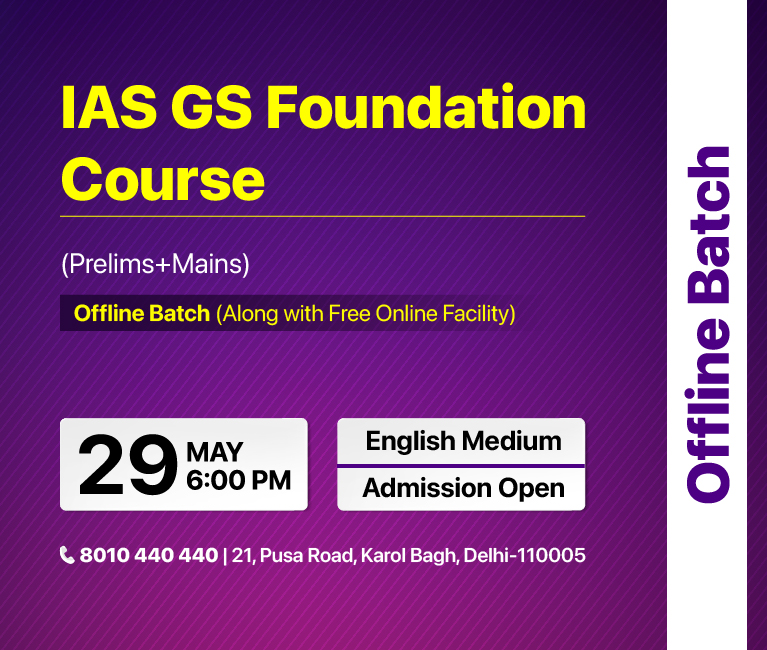
Geography
Regional Rapid Transit System (RRTS)
For Prelims: Regional Rapid Transit System (RRTS), Smart Cities, AMRUT Mission, Swachh Bharat Mission-Urban, HRIDAY, Pradhan Mantri Awas Yojana-Urban, Aspirational district program.
For Mains: Key features of the Regional Rapid Transit System (RRTS , advantages of RRTS with relevant geographical theories.
Why in News?
- Currently, the National Capital Region Transport Corporation (NCRTC) is developing 900 rainwater harvesting (RWH) pits along the Delhi-Ghaziabad-Meerut Regional Rapid Transit System (RRTS) corridor in a move to ensure environmental sustainability.
What is Rainwater Harvesting?
- Rainwater Harvesting & Conservation is the activity of direct collection of rainwater. The rainwater collected can be stored for direct use or can be recharged into the Groundwater.
- There are two main techniques of rainwater harvesting:
- Storage of rainwater on surface for future use.
- Recharge to groundwater.
How do the RRTS Pits Capture and Store Rainwater?
- The pits are strategically placed for maximum water collection and over 75% of these systems are already operational.
- The pits are expected to recharge millions of cubic meters of groundwater, contributing significantly to water table levels.
- The design consists of two small water chambers constructed face-to-face underground, connected by a central rainwater harvesting pit.
- During rainfall, water flows from the viaduct (bridge-like structure) into these chambers The collected water is filtered through three layers of gravel and sand before being absorbed into the ground through the central pit.
- The depth of the pits varies between 16 and 22 meters, depending on the local groundwater level.
- Rainwater harvesting is also being incorporated at each RRTS station, with two pits being built near every entry and exit gate.
What are the Key Facts Regarding the RRTS?
- Background:
- In 2005, a government task force was formed to create a comprehensive transportation plan for the Delhi National Capital Region (NCR).
- This plan called the Integrated Transport Plan for NCR 2032, identified a need for a special rapid transit system to connect major cities within the region.
- The task force identified 8 corridors and prioritized three corridors for this "Regional Rapid Transit System" (RRTS): Delhi-Meerut, Delhi-Panipat, and Delhi-Alwar.
- About RRTS:
- RRTS is a brand-new mode of public transportation designed specifically for the NCR.
- Delhi-Meerut corridor RRTS is a rail-based,semi-high-speed, high-frequency commuter transit system.
- The Delhi-Ghaziabad-Meerut corridor has a total length of 82-km long, with 22 stations.
- Advantages of RRTS:
- High Speed & Capacity: Unlike traditional railways or metros, RRTS trains will travel at much faster speeds (over 160 km/h) and carry a large number of passengers, reducing congestion, high-frequency operations with trains every 15 minutes.
- Dedicated Corridor: RRTS trains operate on a separate, elevated track, free from traffic congestion on roads, ensuring reliable travel times.
- Environmental Impact: RRTS is estimated to significantly reduce air pollution in the region, by encouraging more people to use public transportation
- Economic Growth: Improved connectivity will lead to more balanced economic development across the NCR, creating opportunities in various cities and reducing reliance on a single central hub.
- Sustainable Future: RRTS serves as a model for developing efficient public transport systems in other Indian cities. It will also help reduce overall traffic congestion and emissions within the NCR.
What are the Geographical Theories associated with RRTS?
- Central Place Theory:
-
This theory suggests settlements (cities) develop around central locations that provide services to surrounding areas.
-
RRTS connects smaller towns and suburbs to major cities, allowing for easier access to jobs, education, and other services offered in the central city.
- For example, The Delhi-Meerut RRTS connects Delhi, a major economic hub, with Meerut, a developing city. This improves access for Meerut residents to Delhi's opportunities like jobs, education, and other services offered in the central city of Delhi.
-
- Gravity Model:
-
This model suggests the interaction between two places is influenced by their populations and the distance between them.
-
RRTS strengthens this by facilitating faster and more frequent travel, thus increasing the potential for economic and social interaction between connected cities. This can lead to increased trade, collaboration, and cultural exchange.
-
-
-
Diffusion Theory:
-
This theory explains how ideas, innovations, and practices spread across space. RRTS can lead to the spread of urban development patterns (shopping malls, business districts) along the train corridor.
- For Example, The Delhi-Ghaziabad RRTS could lead to the development of new commercial centres in Ghaziabad, previously a primarily residential area.
-
What are India’s Initiatives for Urban Transportation?
Conclusion
The Delhi-Meerut RRTS project, as a whole, embodies a future-oriented approach to urban development. By prioritizing sustainable practices like rainwater harvesting, the NCRTC sets a positive example for infrastructure projects across India. This commitment to environmental responsibility goes hand-in-hand with the project's aim to provide a high-speed, reliable, and efficient public transportation system, ultimately contributing to a cleaner and more livable NCR.
|
Drishti Mains Question: Q. Highlighting the key features of the Regional Rapid Transit System (RRTS) , discuss the advantages of RRTS with relevant geographical theories. |
UPSC Civil Services Examination, Previous Year Questions (PYQs)
Prelims
Q. With reference to the Indian economy after the 1991 economic liberalisation, consider the following statements: (2020)
- Worker productivity (Rs. per worker at 2004-05 prices) increased in urban areas while it decreased in rural areas.
- The percentage share of rural areas in the workforce steadily increased.
- In rural areas, the growth in the non-farm economy increased.
- The growth rate in rural employment decreased.
Which of the statements given above is/are correct?
(a) 1 and 2 only
(b) 3 and 4 only
(c) 3 only
(d) 1, 2 and 4 only
Ans: (b)
Mains
Q. The frequency of urban floods due to high-intensity rainfall is increasing over the years. Discussing the reasons for urban floods, highlight the mechanisms for preparedness to reduce the risk during such events. (2016)


Important Facts For Prelims
Nagi and Nakti Bird Sanctuaries Recognised as Ramsar Sites
Why in News?
Recently, on World Environment Day, the Nagi and Nakti Bird Sanctuaries in Bihar have been recognised as wetlands of international importance under the Ramsar Convention.
- This brings the total number of such wetlands in India to 82.
What are the Key Characteristics of Nagi and Nakti Bird Sanctuaries?
- Geographical Setting:
- Both the bird sanctuaries are built on human-made wetlands primarily developed for irrigation through the construction of the Nakti Dam.
- Both sanctuaries were designated as Bird Sanctuaries in 1984 due to their importance as wintering habitats for migratory species.
- The catchment area features dry deciduous forests surrounded by hills.
- Both sanctuaries were designated as Bird Sanctuaries in 1984 due to their importance as wintering habitats for migratory species.
- Flora and Fauna:
- These wetlands provide habitats for over 150 species of birds, mammals, fish, aquatic plants, reptiles, and amphibians.
- They host globally threatened species such as the endangered Indian elephant and the vulnerable native catfish.
- According to the Asiatic Waterbird Census 2023, the Nakti Bird Sanctuary reported 7,844 birds, the highest in the survey, followed by the Nagi Bird Sanctuary with 6,938 birds.
Note:
- The Kanwar Lake in Bihar's Begusarai district was designated as the state’s first Ramsar Site in 2020.
What is the Ramsar Convention?
- The Ramsar Convention is an international treaty signed in 1971 in Ramsar, Iran, under the auspices of UNESCO, aimed at conserving wetlands of international importance.
- In India, it came into force on 1st February 1982, under which wetlands of international importance are declared as Ramsar sites.
- Montreux Record is a register of wetland sites of International Importance where changes in ecological character have occurred, are occurring, or are likely to occur as a result of technological developments, pollution or other human interference.
- It is maintained as part of the Ramsar List.
Note
- World Wetlands Day is celebrated every year on the 2nd February across the globe.
- India’s Initiatives for Ramsar Sites:
- National Wetland Conservation Programme (NWCP): It was launched in 1985, to tackle threats to vulnerable wetland ecosystems and enhance their conservation.
UPSC Civil Services Examination, Previous Year Question (PYQ)
Prelims:
Q. Consider the following pairs: (2022)
Wetland/Lake Location
- Hokera Wetland : Punjab
- Renuka Wetland : Himachal Pradesh
- Rudrasagar Lake : Tripura
- Sasthamkotta Lake : Tamil Nadu
How many pairs given above are correctly matched?
(a) Only one pair
(b) Only two pairs
(c) Only three pairs
(d) All four pairs
Ans: (b)
Q. Consider the following pairs: (2014)
Wetlands Confluence of rivers
- Harike Wetlands : Confluence of Beas and Satluj/Sutlej
- Keoladeo Ghana : Confluence of Banas National Park and Chambal
- Kolleru Lake : Confluence of Musi and Krishna
Which of the above pairs is/are correctly matched?
(a) 1 only
(b) 2 and 3 only
(c) 1 and 3 only
(d) 1, 2 and 3
Ans: (a)


Rapid Fire
Netherlands Becomes India’s 3rd Largest Export Destination
The Netherlands has become India’s 3rd largest export destination in the world in 2023-24, after the US and UAE.
- It is among the top trading partners of India in Europe, after Germany, Switzerland, the UK and Belgium.
- Exports to the Netherlands grew by about 3.5% reaching USD 22.36 billion in 2023-24, from USD 21.61 billion in 2022-23.
- The Netherlands constituted 2.36% of India’s total trade in 2022-23.
- Netherlands is also a major investor in India.
- India received about USD 5 billion in Foreign Direct Investment (FDI) from the Netherlands. It was $2.6 billion in 2022-23.
- About Netherlands:
- Bordering Countries: North Sea to the north and west, Germany to the east, and Belgium to the south.
- Capital: Amsterdam (official), The Hague (seat of government).
- Form of Government: Constitutional Monarchy with a Parliamentary system.
- Major Rivers: Rhine, Meuse, and Scheldt.


Rapid Fire
Ajrakh Craft and Bela Block Printing
Recently, Ajrakh, a craft of resist-dyeing from Kutch, received a Geographical Indication (GI) tag, providing legal protection to arts from specific geographical regions.
- Ajrakh, a centuries-old block-printed textile art from Kutch, Gujarat, uses natural dyes and intricate designs to tell stories on cotton fabric.
- Ajrakh textiles consisting of vibrant colours like indigo, red and white, are traditionally worn by nomadic communities like Rabaris, Maldharis, and Ahirs.
Bela Block Printing:
- It is another craft from the same region of Kutch, which is lesser-known and obscure, mainly practised by the Khatri community.
- It is a traditional textile art known for its bold designs, striking colour combinations, and graphic motifs such as elephants and horses on textured fabrics.
- It has also been listed as an endangered craft by the Office of the Development Commissioner for Handicrafts, the national agency that works to promote and export Indian handicrafts.


Rapid Fire
Insolvency Professionals (IPs)
Recently, the Insolvency and Bankruptcy Board of India (IBBI) has issued new guidelines for appointing insolvency professionals (IPs) as interim resolution professionals, liquidators, and bankruptcy trustees.
- Under the new guidelines, a panel of IPs will be set up with a validity of six months.
- The panel will be shared with the National Company Law Tribunal and the Debt Recovery Tribunal (DRT) to avoid administrative delays.
- To qualify for the panel, IPs must not have any ongoing disciplinary proceedings or convictions in the past three years.
- IPs will hold an authorisation for assignment, which will be valid till the validity of the panel (6 months).
- The panel will be prepared based on the volume of completed assignments and registration dates, giving priority to those with more experience.
- The Insolvency and Bankruptcy Board of India (IBBI) operates under the Ministry of Corporate Affairs and aims to enhance the efficiency of the insolvency resolution process by ensuring a pool of qualified professionals for immediate appointment.


Rapid Fire
System for Pension Administration Raksha (SPARSH)
- Recently, the Defence Accounts Department (DAD) of the Ministry of Defence has signed MoUs with several banks to onboard them as SPARSH Service Centres.
- This will provide last-mile connectivity to pensioners, especially in remote areas.
- Through these centres, defence pensioners can update their profile, register grievances, digital annual identification, data verification, and access detailed information regarding their monthly pension.
- System for Pension Administration Raksha (SPARSH):
- It is an integrated web-based system for the automation of sanctions and disbursement of defence pensions.
- This web-based system processes pension claims and credits pensions directly into the bank accounts of defence pensioners without relying on any external intermediary.
- It focuses on efficiency, responsiveness, and transparency.


Rapid Fire
UN’s WSIS 2024 “Champion” Award
Recently, C-DOT (Centre for Development of Telematics), the telecom R&D centre of the Government of India, won the United Nation's WSIS 2024 "Champion" Award in the "Mobile-Enabled Disaster Resilience through Cell Broadcast Emergency Alerting" category.
- The World Summit on the Information Society (WSIS)+20 Forum 2024 was conducted by the International Telecom Union (ITU).
- ITU is a UN specialised agency for information and communication
- technologies – ICTs.
- Founded in 1865, it is Headquartered in Geneva, Switzerland.
- India has remained a regular member of ITU since 1952.
- The award recognized C-DOT's commitment to leveraging technology for societal impact and aligns with global initiatives like Early Warnings for All (EW4All) and the ITU's Common Alerting Protocol (CAP).
- At the AI for Good Global Summit (organised along with WSIS), C-DOT showcased its AI-powered solutions such as ASTR (AI and Facial Recognition powered Solution for Telecom SIM Subscriber Verification) for detecting fraudulent/unauthorised mobile connections.
Read More: Emergency Alert System, Cell Broadcast Technology



